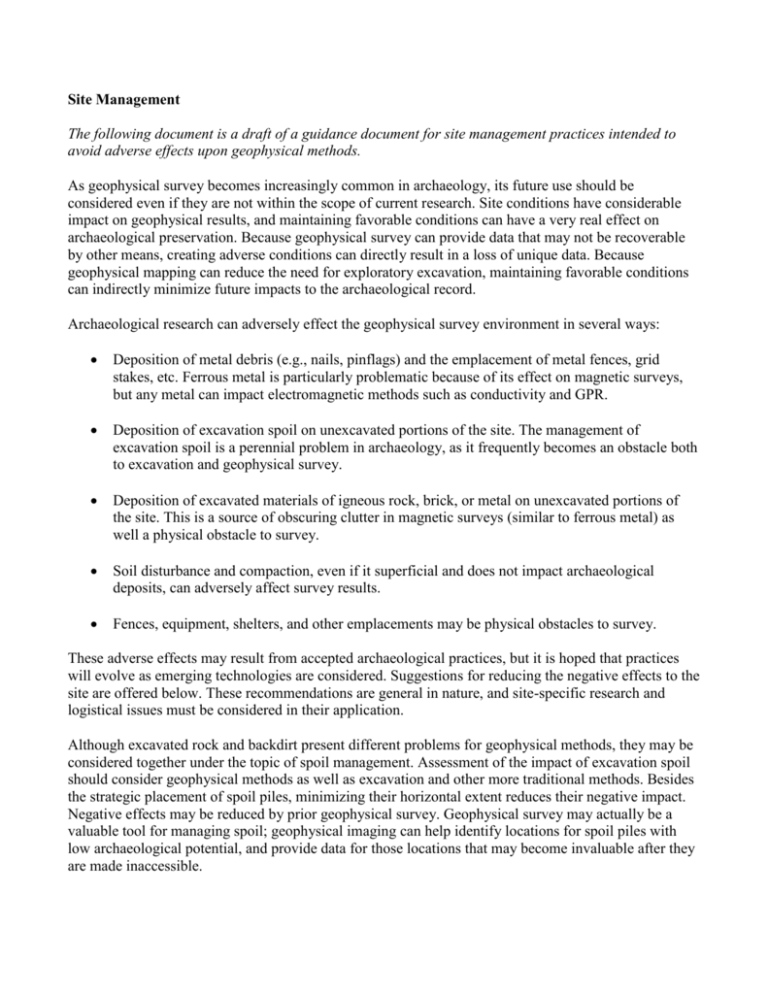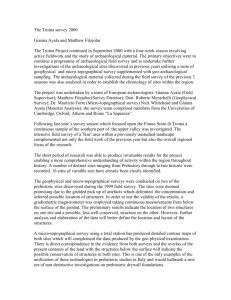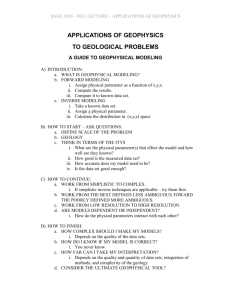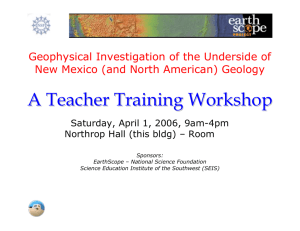Site Management - Archaeo
advertisement

Site Management The following document is a draft of a guidance document for site management practices intended to avoid adverse effects upon geophysical methods. As geophysical survey becomes increasingly common in archaeology, its future use should be considered even if they are not within the scope of current research. Site conditions have considerable impact on geophysical results, and maintaining favorable conditions can have a very real effect on archaeological preservation. Because geophysical survey can provide data that may not be recoverable by other means, creating adverse conditions can directly result in a loss of unique data. Because geophysical mapping can reduce the need for exploratory excavation, maintaining favorable conditions can indirectly minimize future impacts to the archaeological record. Archaeological research can adversely effect the geophysical survey environment in several ways: Deposition of metal debris (e.g., nails, pinflags) and the emplacement of metal fences, grid stakes, etc. Ferrous metal is particularly problematic because of its effect on magnetic surveys, but any metal can impact electromagnetic methods such as conductivity and GPR. Deposition of excavation spoil on unexcavated portions of the site. The management of excavation spoil is a perennial problem in archaeology, as it frequently becomes an obstacle both to excavation and geophysical survey. Deposition of excavated materials of igneous rock, brick, or metal on unexcavated portions of the site. This is a source of obscuring clutter in magnetic surveys (similar to ferrous metal) as well a physical obstacle to survey. Soil disturbance and compaction, even if it superficial and does not impact archaeological deposits, can adversely affect survey results. Fences, equipment, shelters, and other emplacements may be physical obstacles to survey. These adverse effects may result from accepted archaeological practices, but it is hoped that practices will evolve as emerging technologies are considered. Suggestions for reducing the negative effects to the site are offered below. These recommendations are general in nature, and site-specific research and logistical issues must be considered in their application. Although excavated rock and backdirt present different problems for geophysical methods, they may be considered together under the topic of spoil management. Assessment of the impact of excavation spoil should consider geophysical methods as well as excavation and other more traditional methods. Besides the strategic placement of spoil piles, minimizing their horizontal extent reduces their negative impact. Negative effects may be reduced by prior geophysical survey. Geophysical survey may actually be a valuable tool for managing spoil; geophysical imaging can help identify locations for spoil piles with low archaeological potential, and provide data for those locations that may become invaluable after they are made inaccessible. Steel pinflag stakes, nails, datums, and other items that are deliberately or accidentally left on sites during archaeological researchers can have a very detrimental effect on magnetic data. Plastic, wood, or aluminum substitutes may often be found for these items. Instructing workers not to discard metal items such as wire scraps or bottle caps, and providing trash receptacles may help minimize the amount of metal debris on the site. Potential impact on geophysical methods should also be considered in the use of vehicles and equipment on site. Even light passenger vehicles can cause compaction and disturbance that can affect geophysical results, sometimes for many years. In some cases, long lasting wheel tracks form a detectable part of the archaeological record (example: Army City). Of course, the effect of transient traffic on hard surfaces is minimal, and on cultivated land most effects will be temporary. Negative impacts may be reduced by minimzing the amount and the areal extent of traffic. Geophysical survey logistics should be considered in the placement of fences, structures, and other installations that may be obstacles or sources of signal “clutter.” Negative effects may be reduced by surveying prior to placement, or by avoiding areas of high priority or potential. Ultimately, the problems of site management are in finding appropriate compromises between conflicting demands of preservation, research goals, time, funding, logistics, and other factors. Although it must be balanced against other considerations, the geophsical environment should be considered, both for present research and for long-term preservation of the archaeological record. Many of the recommendations above can be implented at very small expense or inconvenience. Damage to the geophysical survey environment is often effectively permanent. Where it can be mitigated, the cost in terms of time and money is usually much greater than that of prevention.




